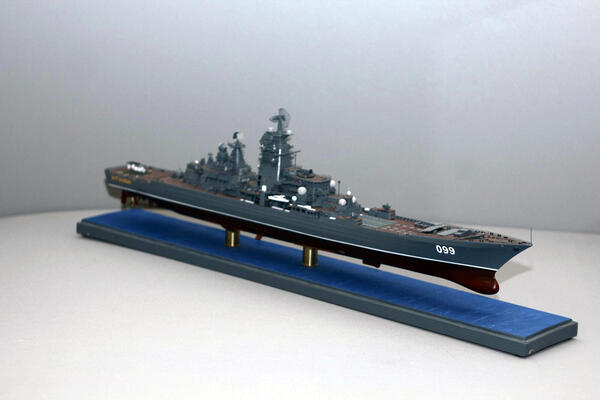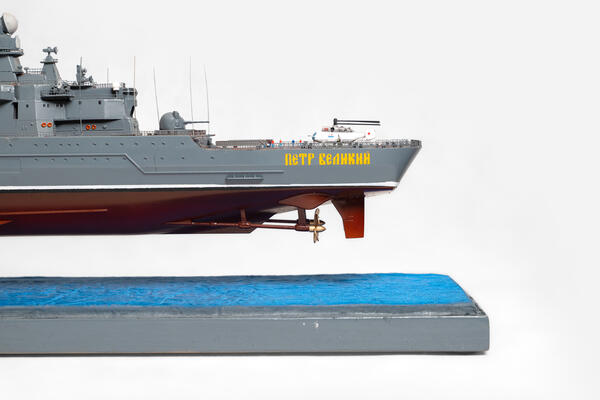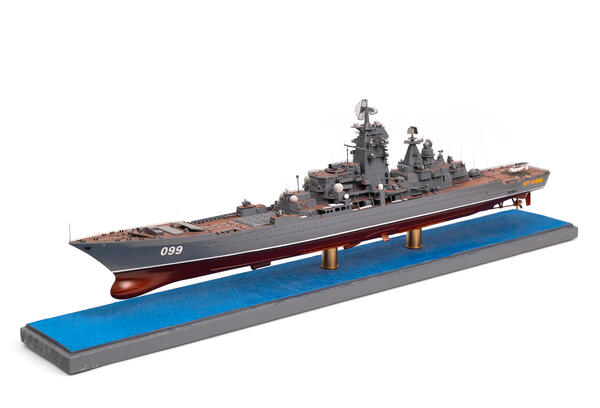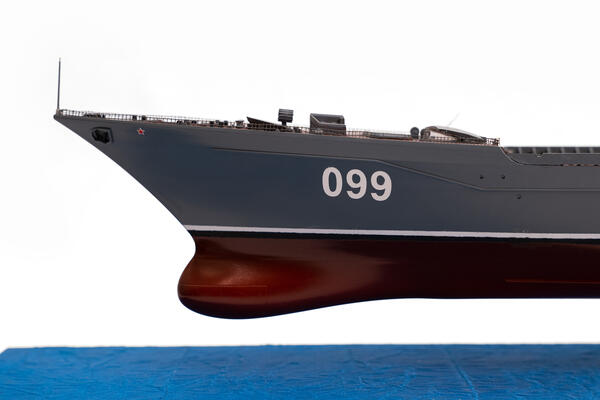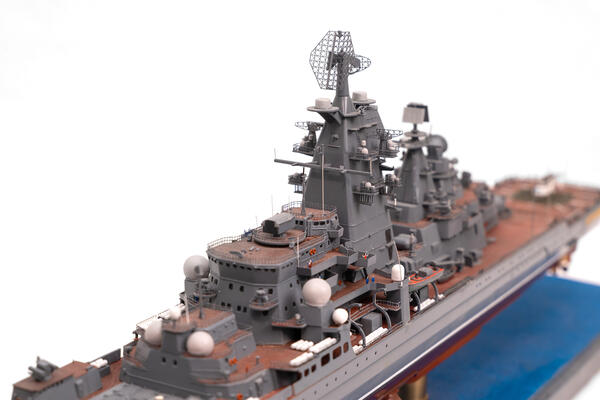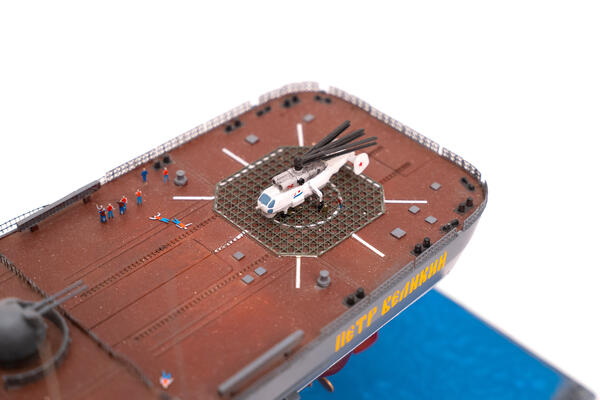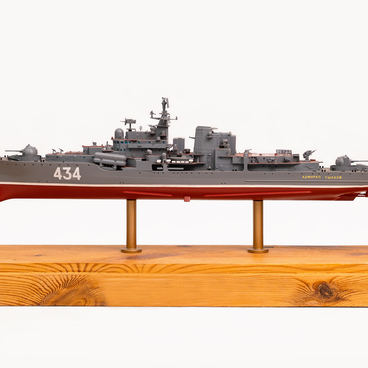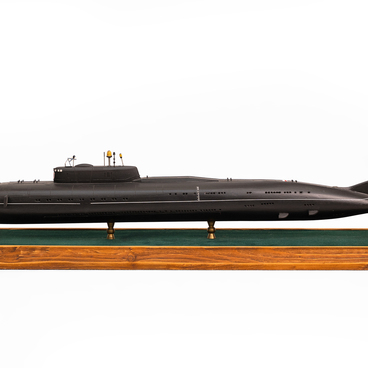“Pyotr Velikiy” is the last of the built and the only remaining nuclear-powered heavy battlecruiser of Project 1144 “Orlan”. She was built for the USSR Navy and initially named “Yuri Andropov”, but while still under construction, the ship was designated “Pyotr Velikiy”. With a displacement of almost 26,000 tons, the cruiser ranks first among all warships (that are not aircraft carriers) in size. The Pyotr Velikiy cruiser is the flagship of the Northern Fleet of the Russian Navy. The main purpose of the battlecruiser is to destroy large surface targets, as well as to protect naval formations from attacks by enemy aircraft and submarines in remote areas of seas and oceans.
The ship was laid on March 11, 1986 at the Baltic Shipyard. At that time, she was called “Kuibyshev”. During construction, the ship was assigned factory number 803. She was launched on April 29, 1989 under the name “Yuri Andropov”. The cruiser was renamed Pyotr Velikiy (Peter the Great) in accordance with the decree of the President of Russia Boris Yeltsin dated April 22, 1992. In 1996, Yeltsin came on board the ship. The President filled out the first page in the book of honored visitors, addressed the crew and presented a personal standard. On April 18, 1998, the St. Andrew’s flag was raised on the ship and Pyotr Velikiy officially joined the Russian Navy.
The Pyotr Velikiy cruiser is considered the most modern and powerful ship of the Russian Navy, and one of the most powerful assault ships in the world. This heavy nuclear-powered guided-missile cruiser has an unlimited cruising range. She is equipped with P-700 Granit anti-ship cruise missiles capable of destroying targets at a maximum distance of up to 600 kilometers.
On August 12, 2000, instruments on the
nuclear-powered cruiser recorded an underwater explosion that occurred during
exercises in the Barents Sea. In the evening, the Russian nuclear submarine
Kursk, which was taking part in naval exercises, failed to establish contact.
The next day, thanks to her sonar equipment, the battlecruiser discovered the
submarine lying at the bottom at a depth of 108 meters. Pyotr Velikiy then
joined in the naval operation to recover the Kursk submarine.

